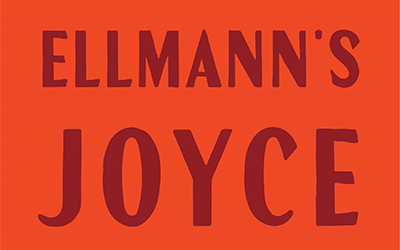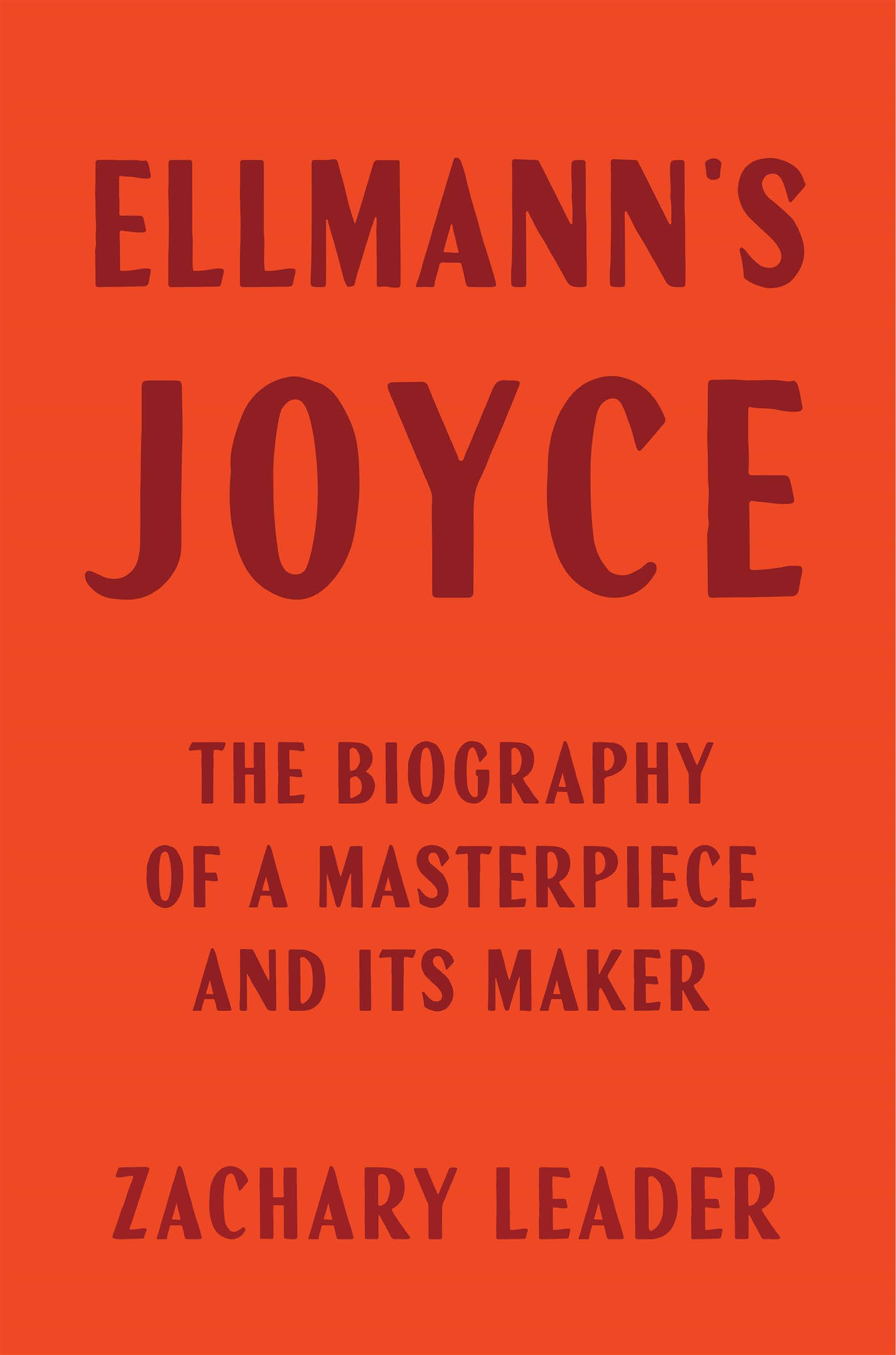
- Free Article: No
- Contents Category: Literary Studies
- Review Article: Yes
- Article Title: Two books in one
- Article Subtitle: The biography of a biographer
- Online Only: No
- Custom Highlight Text:
As its subtitle suggests, Ellmann’s Joyce: The biography of a masterpiece and its maker is two books in one. Zachary Leader spends the first half recounting the early life and career of Richard Ellmann (1918-87), one of the great luminaries of postwar literary studies. The second half delivers the promised ‘biography of a masterpiece’, in the form of a detailed account of Ellmann researching and writing his most celebrated work, James Joyce (1959; revised 1982), a book still considered a monument of Joycean scholarship and a paragon of the literary biographer’s art.
- Featured Image (400px * 250px):

- Alt Tag (Featured Image): James Ley reviews ‘Ellmann’s Joyce: The biography of a masterpiece and its maker’ by Zachary Leader
- Book 1 Title: Ellmann’s Joyce
- Book 1 Subtitle: The biography of a masterpiece and its maker
- Book 1 Biblio: Harvard University Press, US$35 hb, 430 pp
- Book 1 Cover Small (400 x 600):

- Book 1 Cover (800 x 1200):

- Book 1 Readings Link: https://www.readings.com.au/product/9780674248397/ellmanns-joyce--zachary-leader--2025--9780674248397#rac:jokjjzr6ly9m
Leader is himself a literary academic and biographer of some distinction, having written substantial lives of Kingsley Amis (2006) and Saul Bellow (2015). His interest in Ellmann is grounded in the contingencies and methodological issues that are intrinsic to the biographical enterprise. In particular, he is curious about the shaping influence of the biographer’s experiences and temperament, an issue the ‘biography of a biography’ concept teases out by adding a self-reflexive dimension to the perennial problem of negotiating the complicated relationship between a writer’s life and his work.
James Joyce is a famously sympathetic book, despite Ellmann’s clear-eyed view of his subject’s many flaws. In his preface to the revised edition, Ellmann declares his ‘affection’ for Joyce. Leader suggests that a sense of affinity may have contributed to the emphasis the biography places on ‘Joyce as family man’, though he immediately adds that the Ellmann family was ‘very different’.
Readers aware of the basic facts of Joyce’s life are, initially at least, more likely to be struck by the differences than by the affinities. Joyce was the oldest child in a large Irish Catholic family that descended into poverty as a result of the chronic fecklessness of his alcoholic father. His creative life had its origins in his revolt against the stifling culture of late-nineteenth-century Ireland, a country systematically immiserated by British imperialism and the malign influence of the Catholic Church. He fled to Europe, where he lived defiantly and precariously in the service of his art, mostly at the expense of other people. Joyce was inclined to treat his unrequited borrowing, lofty self-absorption, and drunken irresponsibility as indulgences justified on the grounds of his genius. This is a particularly annoying manifestation of arrogance, but Joyce had the extremely rare compensating factor of actually living up to the ‘being a genius’ part of the bargain. He transformed twentieth-century literature with a series of increasingly audacious works, a creative triumph achieved in the face of hostility and incomprehension. ‘Hardly anything he ever wrote was published without a struggle,’ observed Joyce scholar Harry Levin, who would become one of Ellmann’s sharpest critics. ‘If the editors accepted his manuscripts, the printers refused to set them up; if the publishers brought out his books, the censors destroyed them. If the charge was not obscenity, it was blasphemy; if not blasphemy, it was treason … For years after Joyce had become one of the acknowledged masters of English prose, it was illegal to read his books in any English-speaking country.’
Ellmann was born in Detroit, the second child of a successful immigrant couple. His family was ‘comfortably upper-middle-class’, so financial hardship never entered the picture, even hypothetically. Leader’s account is largely a tale of comfort and security, professional opportunity and unimpeded advancement. For the most part, Ellmann lived the kind of undramatic life that is no doubt agreeable but not exactly the stuff of an exciting biography. The closest the book comes to recording any familial friction in his early life is the disapproval of his parents – whose Jewishness was, in Leader’s words, ‘less a matter of faith or ritual than of culture and values’ – when their two oldest sons fell in love with gentiles. Their strongest disapproval was reserved for Ellmann’s older brother, whose wife was a bit too poor, vivacious, and Catholic for their liking (the marriage would last sixty years), but Ellmann’s wife, Mary – a notable feminist literary scholar in her own right – was also viewed with suspicion. Her goyish first name was such a sticking point that her in-laws always used her middle name, Joan.
Leader talks up the interest of his subject with reference to Gabriel García Márquez’s remark about everyone having a public, private, and secret life, but even the latter turns out to be the rather humdrum revelation that, relatively late in his career, Ellmann had an affair with a colleague. He was, it seems, a mild and decent person. He had no serious quarrel with his nation. He was far more interested in literature than politics, so his views defaulted to the milquetoast American liberalism of the times (that his biography did not fully appreciate the importance of Joyce’s politics would become a point of contention). Near the end of his life, when asked about his religion, Ellmann replied ‘none’. Apart from the brief diversion of his wartime service – administrative, as his weak eyesight precluded a combat role – Ellmann proceeded smoothly from talented student to professional scholar and decorated author. He became a full professor at thirty-one. At one point, he was the most handsomely remunerated literary academic in the country. His teaching duties were modest, and he had every third year off, on full pay, to pursue any research project he pleased. As a result, he enjoyed the kind of productive scholarly career that the contemporary university has devoted itself to stamping out.
Ellmann’s Joyce comes into its own when Leader turns his attention directly to the business of research. He writes not only with great respect for the labour involved, but with a sense of its understated drama. A certain geekish interest is probably a necessary precondition of such an appreciation, but the word ‘drama’ is not too strong. Leader’s portrait casts the biographer as gumshoe. Ellmann appears as a tweedy literary detective, chasing down every available scrap of evidence, conducting interviews with reluctant or evasive witnesses, cajoling intimate details, discerning people’s conflicting agendas, assessing their reliability, conducting delicate negotiations with Joyce’s surviving family, all the while trying to stay a step ahead of rival scholars. His investigative efforts are rewarded with the thrill of discovering new material. At one point, Ellmann was interviewing Joyce’s friend Maria Jolas and she casually revealed that she had a trunk full of correspondence, entrusted to her when Joyce fled France for the safety of Switzerland in 1939.
Leader writes with a deep understanding of the academic milieu of the times. Ellmann’s interest in biography was swimming against the tide of intellectual fashion. In the 1950s, American literary studies was largely in thrall to T.S. Eliot’s doctrine of impersonality and the New Critics’ insistence on the autonomy of the text. A writer’s work was supposed to speak for itself. Ellmann’s biography was publicly lauded upon publication, but it also prompted a granular critical debate among Joyce scholars about the extent to which he might have been guilty not simply of the critical gauchery of interpreting the work in light of the biography, but of drawing on fictionalised representations to illuminate aspects of the life.
Consideration of these historical arguments is incorporated into the book, alongside its forensic analysis of Ellmann’s views on biography, his treatment of specific evidence, and his Johnsonian prose style. Among the many contested details Leader examines is a letter in which Joyce claimed, suggestively if somewhat opaquely, that on 16 June 1904 – the day on which Ulysses is set – his future wife, Nora Barnacle, made him a man. The clear implication is that something sexual took place. Corroborating evidence would seem to confirm that one of the greatest novels of the last century was indeed written, at least in part, to commemorate the glorious day when Nora first gratified Joyce with a cheeky hand shandy. Ellmann was, however, criticised for suggesting that details of that encounter are recalled in Molly Bloom’s celebrated soliloquy, most notably by the Eliotian critic Denis Donoghue, who objected to what he saw as a simplistic conflation of life and literature. Leader returns to the primary sources to establish exactly what we know. He uses Ellmann to demonstrate how the biographer is constrained by available evidence but can make reasonable conjectures in certain circumstances. Here, as elsewhere in his book, Leader vindicates Ellmann. He demonstrates how a degree of imaginative identification can give comprehensible form to a writer’s life, without necessarily tripping over into outright speculation or crude biographical determinism. In doing so, he makes a compelling case for the validity and critical value of the often maligned genre of literary biography.


Comments powered by CComment